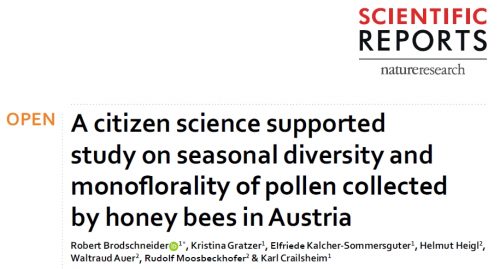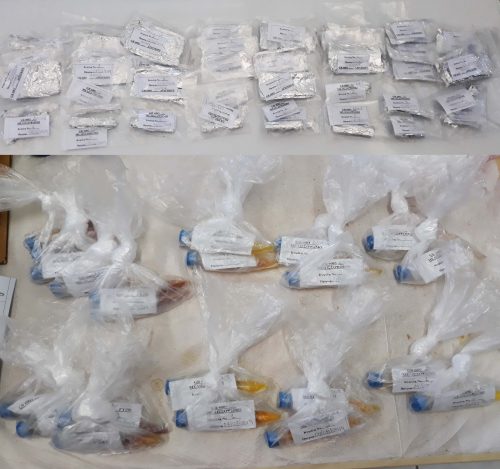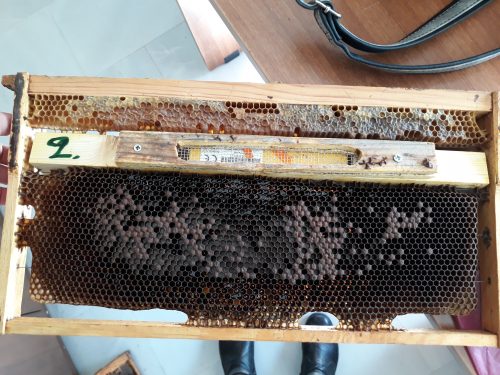After samples’ arrival, they are all coded and then analysed or stored in the freezer till the day of analysis. For their preparation, extraction and clean-up steps are taking place, to separate the analytes from interfering compounds and obtain the optimum results. For the quantification of the pesticide residues analysed, both liquid and gas chromatography combined with tandem mass spectrometry is used. The last stage of this procedure is the data analysis and the evaluation of the results.
Lab material and equipment used by the lab staff (us), are presented in the following pictures. In particular, in the picture on the left, 50mL falcons containing salts for the clean-up step of the samples and 15mL falcons containing samples after the clean-up step are shown in the back and front part of the picture, respectively. Vials to be filled and vials ready for injection in LC-MS/MS and GC-MS/MS are also presented in the following pictures.
Effrosyni Zafeiraki








